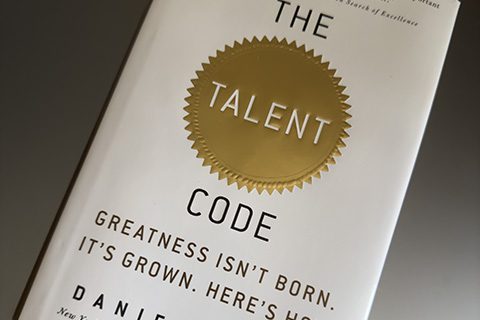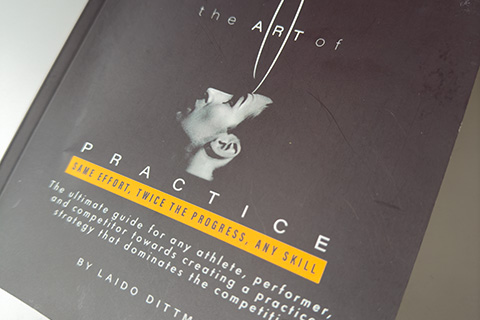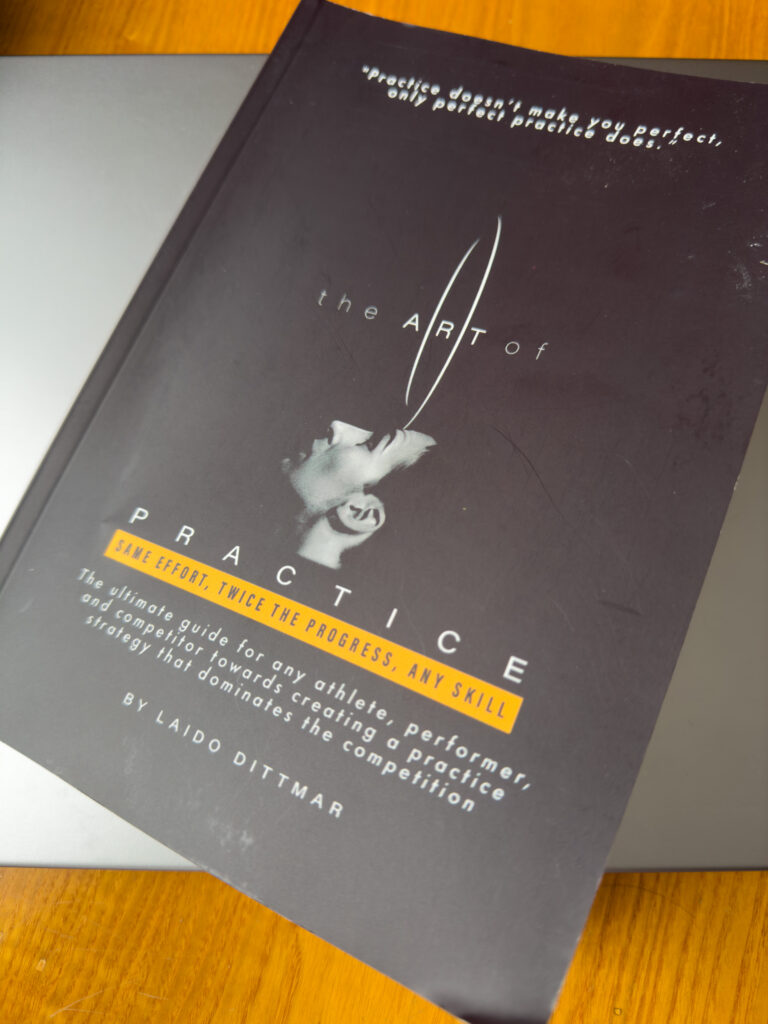The Talent Code is the most transformative book I have read on the subject of practice in the past three and a half years of music study.
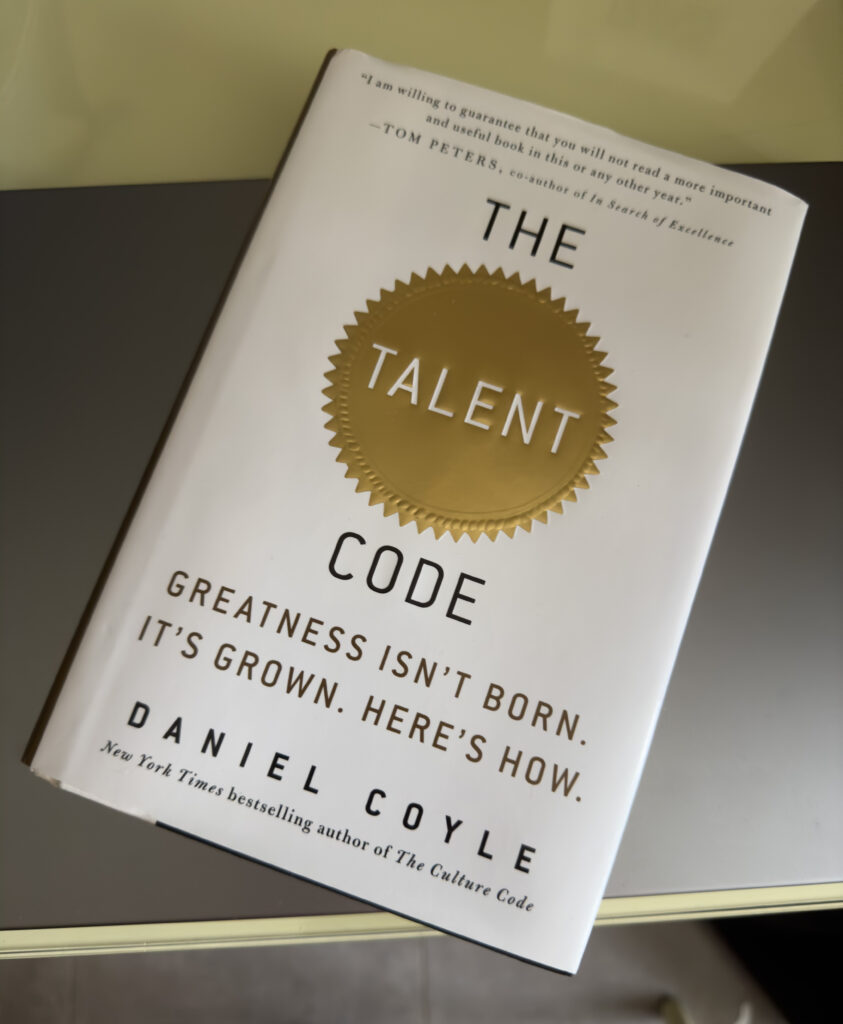
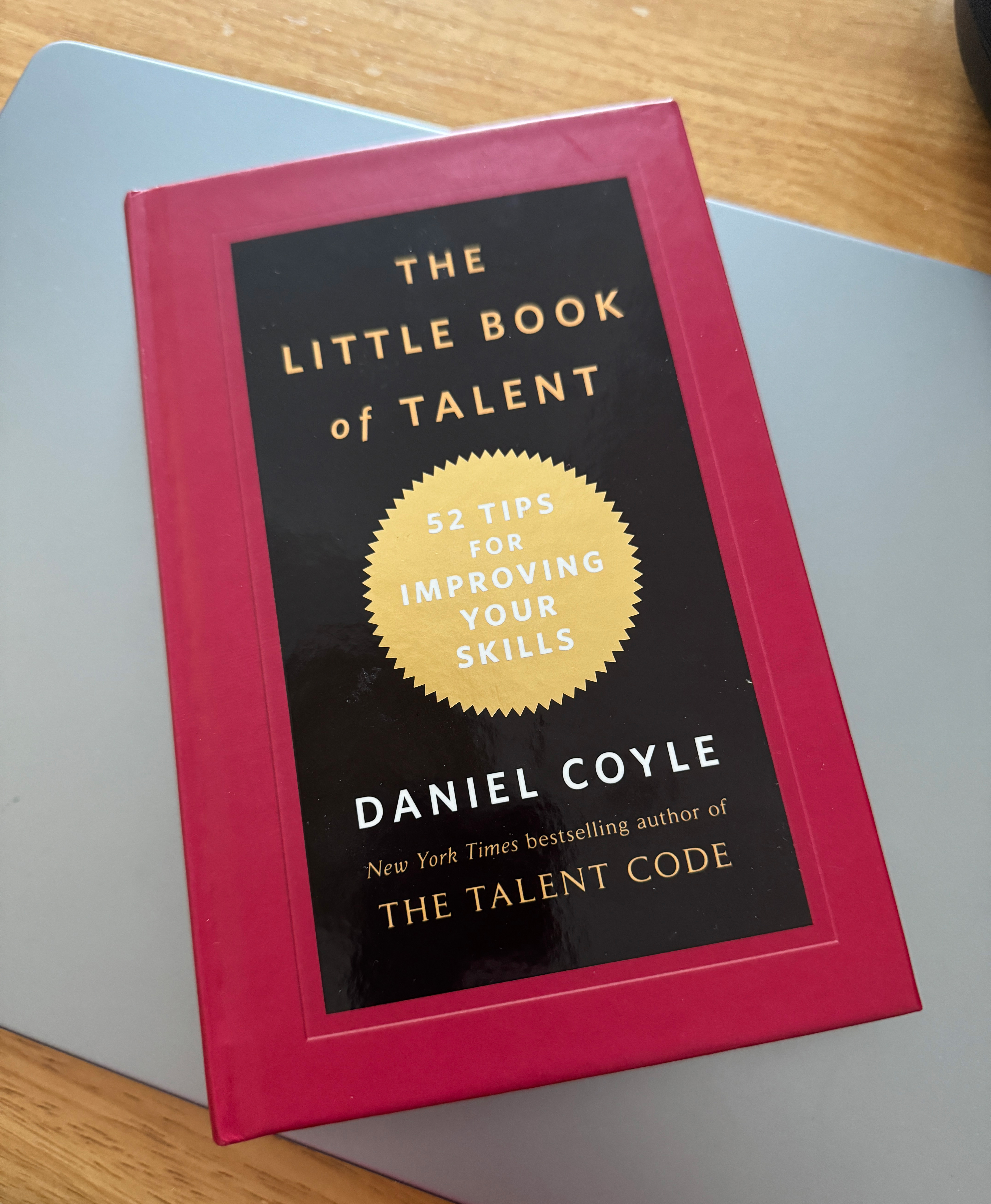
The TL;DR:
- The Little Book of Talent: While not sold as such, I view this book as a companion to The Talent Code. It is intended as a ready reference of 52 points for better learning, in a pocketable format. It is a short and sharp read (you’ll get through it in a couple of hours) and full of sage advice.
- The Talent Code: The book has a tag line of “Greatness isn’t born. It’s grown. Here’s how.” and that is apt appellation. The book provides copious examples of people learning to a level of excellence and explores the current science with regard to the biological processes the brain uses to learn. The message is simple: Genes / innate gifts make a vanishingly small contribution to the development of skill or talent. Far from being God-given, talent is all down to hard, deep and effective work.
I read the books in that order but would recommend reading The Talent Code first. Keep The Little Book of Talent around for the long as a reference.
I can’t recall how I came across Daniel Coyle’s two books. I bought The Little Book of Talent in June and The Talent Code in August, according to my Amazon history. I only got around to giving them some quality time for study while on holiday in Vietnam for five weeks over Christmas.
The central theme to Coyle’s work is the proposition that talent is nurtured and grown, not something that is gifted. Prodigal ability stems from prodigal work according to Coyle’s thesis (my drum teacher echos this with this far more Australian take: “If you want to be crazy good at something, you’ve gotta be a little bit crazy!”). Gifted people might turn up once in a decade but for the vast majority of people (even at an elite level), it is all down to hours of dutiful practice.
The Talent Code is replete with examples to support Coyle’s argument. He refers to “Talent Hotbeds” in his work and studies sources as diverse as Jessica Simpson’s journey from a young girl singing in church to securing her first significant album deal. Her vocal coach (a colourful tale in and of itself) recounted “Your voice is incredible, but if you can’t connect, it doesn’t matter. But Jessica was a hard, hard worker. She really dove in. [ … ] It took two years to fix the vibrato and a few more to learn stagecraft”. Coyle spends a lot of press telling the tale of how the obscure island country of Curaçao came to be a force in baseball that produces signficantly more major league players than they otherwise should.
The adages my piano and drum teachers drop from time to time echo in Coyle’s narrative; but with one critical difference to an adult learner: Coyle ties the learning process back to its biological roots in neural processes – specifically the process by which the brain lays down myelin. Myelin acts as an insulation layer around neural pathways and is the principal means by which the brain acquires procedural memory. Coyle refers to procedural memory as automaticity which is a cracking term that I intend to use a lot moving forward.
When the learning process is completed to a high level, automaticity is up to 3,000 times faster than using your cognitive brain to perform the same function.
Myelination processes underpin everything in this book:
Myelin does not care
Myelination is a dispassionate and subconscious process of locking in reinforced learning. It doesn’t care what you’re learning. If it detects a consistent firing of a set of neural pathways, they will get locked in more and more with each iteration. This really underscores, at a concrete and biological level, why slow and deliberate practice with a correction of errors is important.
Myelination is a one way process
Myelin is wrapped around pathways in your brain in response to neural activity. With the exception of old age, myelin does not unwrap. If you learn something incorrectly, the only option you have is to learn a pathway of greater myelination precedence to override the damage you did through incorrect learning. This is why adages such as ‘playing it as slowly as you need to get it correct’ are true at a biological level. The one way nature of the myelination process underscores “Practice Makes Perfect” being famously re-written as “Practice Makes Permanent”.
Myelin is built through repetition and struggle
As a dispassionate biological process, the accretion of myelin on pathways in your brain requires a loop of execution and correction. One of Coyle’s three pillars of The Talent Code is the importance of deep practice. He defines this as practice where there is a certain about of reach, pain and error, but not too much. The human body reacts positively and correctively to this stress (just like going to the gym):
- Practicing something and getting it correct 100% of the time is pointless as you’re just going through the motions.
- Correct 80% of the time with some difficulty and strain is the sweet spot.
- Practicing with errors more than 50% of the time is counter productive.
You must be prepared to work at your limit of ability and make mistakes in order to trigger the brain’s adaptive processes. The applicaiton of corrective actions is critical as this causes adaptation.
Coyle breaks his “Talent Code” down into three distinct areas:
Ignition
This is probably the most nebulous part of The Talent Code. Ignition is the process by which someone is inspired and chooses to commence study. On an individual level, we all have our own reasons for pursuing a particular area of study. What is fascinating about Doyle’s research is he shows many examples where an entire country has been ignited to pursue a talent based on a single definable point of influence. Examples he provides include:
- Si Ri Pak’s 1998 win of the McDonald’s LPGA Championship. She became a hero to young Korean women who all asked themselves: “If she can do it, why can’t I?”. Coyle then concisely shows the unstoppable march of Koreaon women through the LPGA from one person on tour in 1998 to 33 by 2007.
- Andruw Jones debut at Yankee stadium and knocks out two consecutive home runs during World Series. This sends a shockwave through the youth of his tiny island home country. This ignited youth also ask themselves the same question. “If he can do it, why can’t I?”
Andruw’s performance was not down to chance – but extended and deep practice (he used to swing sledge hammers instead of baseball bats to build strength).
One part of Coyle’s book I found deeply fascinating was the profound influence language has on the motivation to develop new skills.
[ The importance of verbal cues ] can be seen most vividly in a series of experiments Dweck did with four hundred New York fifth graders. The study was a scientific version of the fable “The Princess and the Pea.” Its goal was to see how much a tiny signal – a single sentence of praise – can affect performance and effort, and what kind of signal is most effective.
First Dweck gave every child a test that consisted of fairly easy puzzles. Afterward the researcher informed all the children of their scores, adding a single six-word sentence of praise. Half of the kids were praised for their intelligence (“You must be smart at this”), and half were praised for their effort (“You must have worked really hard”).
The kids were tested a second time, but this time they were offered a choice between a harder test and an easier test. Ninety percent of the kids who’d been praised for their effort chose the harder test. A majority of the kids who’d been praised for their intelligence, on the other hand, chose an easier test. Why? “When we praise children for their intelligence, ” Dweck wrote, “we tell them that’s the name of the game: look smart, don’t risk making mistakes.”
“The third level of tests was uniformly harder; none of the kids did well. However the two groups of kids – the praised-for-effort group and the praised-for-intellience group responded very differently to the situation. “[The effort group] dug in and grew very involved with the test, trying solutions, testing strategies,” Dweck said. “They later said they liked it. But the group praised for its intellience hated the harder test. They took it as proof they weren’t smart.”
The experiment then went full circle, returning to a test of the same difficulty as the initial test. The praised-for-effort group improved their initial score by 30 percent, while the praised-for-intelligence group’s score declined by 20 percent.
The Talent Code, by Daniel Coyle, p135-136
I find the impact of these six word sentences quite profound and it should really inform you as to what sort of internal narratives you construct for motivating your own practice.
In his examples covering elite coaching he shows that the best coaches don’t coach by sermon, but by very short and didactic pieces of advice in the moment. Immediate. Corrective. Dispassionate. An example on the piano might be where you struggle with a particular bar and your teacher pulls you up and asks for five repetitions of the difficult part with counting or rhythmic solfege to support your performance.
The Talent Code has had a profound effect on how I view my time spent in music studies. It re-iterates what my piano and drum teachers talk about intuitively, but in a way that makes it ‘real’ for an adult questioning what all of the slow repetition is about.
I am going to spend the next three weeks in Vietnam reflecting on how I will incorporate all of this into my practice regime for 2024.
I found The Talent Code transformative. I hope you do too.
